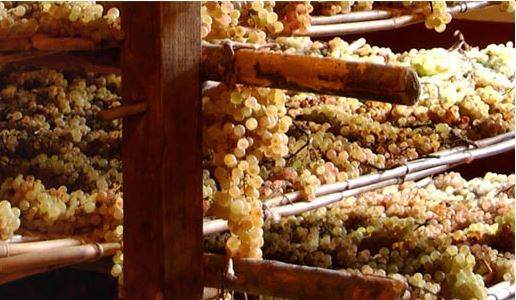The best Vin Santo from Chianti

Sometimes sweet, sometimes sweetish, sometimes dry, Vin Santo is a typical holiday wine from Tuscany. Here we propose our best choise from Vin Santo del Chianti DOC.
Vin Santo is a wine to itself. It is not always sweet (each producer has his own style) and the image of dipping a cantuccio cookie into a glass of Vin Santo is a bit simplistic. There is nothing wrong in doing this but it is not exactly elegant. But the worst practice is serving it in a small glass, which compresses its aroma and mortifies the wine.
Vin Santo is a typical Tuscan wine and each area in the region has its own version. Here we look at the DOC Vin Santo del Chianti appellation, which like the DOCG Chianti one has different subzones, like Rufina. Vin Santo has other DOC appellations: there is Chianti Classico (its historic area); Carmignano (the Capezzana is excellent), Montepulciano (with the famous Avignonesi); and Colli dell’Etruria Centrale and Valdinievole (but these DOC indicate are not used much).
In regard to production, the basic varieties used to make Vin Santo are Trebbiano Toscano and Malvasia Bianca Lunga, with the addition of other traditional white varietals and even Sangiovese, used for Vin Santo Occhio di Pernice that has a more reddish color. After being picked the grapes dry or raisinate on mats or are hung in specials places, traditionally in attics. Once the grapes have dried (the time it takes varies estate to estate but usually ends by Christmas) they are pressed and the must is put into caratelli, small kegs of between 50 and 200l, where fermentation takes place and the wine matures. Traditionally, the dregs (called madre, mother) are left in the kegs from the previous production to allow their yeasts to initiate the fermentation of the concentrated must obtained from raisins. Not all producers follow this ancient method and some prefer to use inoculated cultured yeasts apt to initiate fermentation when there is a high sugar level. However, one method does not exclude using the other and the madre dregs are sometimes left in the caratelli kegs to recreate an estate’s traditional and inimitable style. The caratelli kegs are then sealed and left untouched for at least three years but more often than not for a much longer period.
This method of production results in the loss of at least 2/3 of the initial production (regulations indicate a yield of 35%) and this means that the cost of Vin Santo is not economical and so watch out for imitations. In fact, in shops you can find wines marketed as Vin Santo but have nothing to do with the authentic one, the wine that can be summed up as true joy for the palate.

 Italiano
Italiano


















